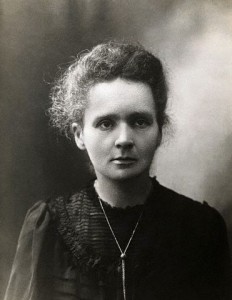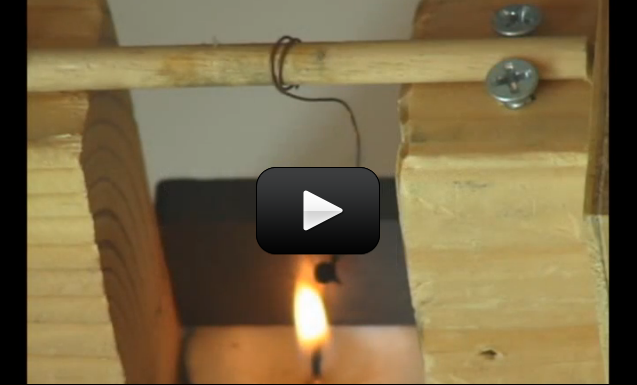
Magnetic material loses its ability to stick to a magnet when heated to a certain temperature called the Curie temperature. The Curie temperature for nickel is 380 oF, iron is 1,420oF, cobalt is 2,070 oF, and for ceramic ferrite magnets, it starts at 860oF.
We’re going to heat a magnet so that it loses temporarily loses its magnetic poles, and watch what happens as it cycles through cooling. Pierre and Marie Curie’s first scientific works were actually in magnetism, not chemistry, and their papers in magnetic fields and temperature when among the first noticed by the scientists at the time.
Are you ready to see what they figured out?
Please login or register to read the rest of this content.


Yeah! We got it to work. Now, is there a way to make it go faster? Also, can you tell me what is the application for this? Such as why this is important to know. Is there engines or motors that actually use this principle? Can things really be powered by this heating and cooling?
Thank you for your help Aurora. This is why Supercharged Science is worth every penny.
could it be the grade of the magnet? I think mine say N42. I didn’t know what that meant when I ordered. I didn’t think this was going to be such a picky project.
Should the tiny magnet actually touch the larger magnet? Or does it just need to pulled in?
Yes, neodymium magnets are rare earth magnets – it sounds like you have the right equipment but it just needs to be tweaked and aligned. I used a ceramic magnet that was large enough so it didn’t heat up much (and had a higher curie temp than the pendulum magnet so it wouldn’t loose its magnetism during the experiment). Make sure that the large magnet is in the right position – just like in the video. It needs to be able to jump up to the large magnet when at the bottom of it’s swing, but not be too close that it moves out of the flame when attached.
I am not sure about it breaking – neodymium magnets can ignite and burn when heated too much. Here’s a page you might find useful that contains curie temperatures for all the K&J magnets.
My best troubleshooting advice: with a keen eye and a patient hand, you’ll be able to make the subtle changes you need to get it working just right. This is one of those super-sensitive experiments that takes someone who is good at observing and will notice where to make minor adjustments.
One more thing, what about the two disc that broke in half from the heat? Is that normal? Did I get bad magnets? I feel like I just wasted too much money.
I guess I thought the tiny neodymium ring magnets were rare earth magnets. I ordered them from K&J Magnetics online.
Do I need to get something different? Also, I didn’t have the large ceramic magnets for the pendulum to swing to. I was using/ trying stacked neodymium discs and I also have cubes that I tried. When I searched online to see other peoples examples that is what most of them had. I do have a Radio Shack about a half hour away I could get to if they would have what I need.
You need a rare-earth magnet to make this work – those types of magnets work better because they lose their magnetism at a lower temperature (if you heat it up too much, you can make the magnets permanently demagnetized).
This heat engine is basically a pendulum, where the weight is a small magnet. Use a LARGE magnet nearby (so that the pendulum sticks to it) just close enough so that the pendulum jumps to the large magnet when at rest (at the bottom of its swing). The flame should *just* touch the pendulum so its heats it up until it loses its magnetism and gravity pulls it back down. I used a tiny magnet so it would cool off quickly and become attracted to the large magnet fast.
Keep me posted! You can send a picture if you need more help – maybe I can suggest something about your setup.
We were only using a votive candle –not the torch 🙂
HELP! I was going to be doing this with a group on Thursday so we did a trial run tonight and we could not get it to work. My husband even worked on it for 2 hours. Our little disc magnets when heated actually go “dead” and permanently lose their magnetism and we had 2 larger disc neodymium magnets on the side instead of the ceramic but they shattered. What is happening? I need help.